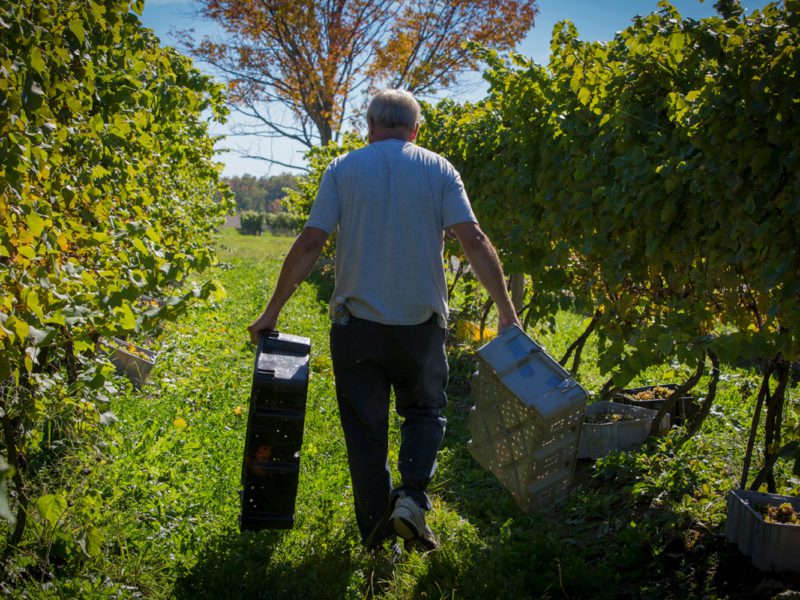
Timing the Harvest
by Gary Twining
In Ohio, and everywhere, winemaking is all about preserving the quality of the fruit from vine to wine, ensuring the wine reflects the best of its fruit’s character. And it’s up to skilled winemakers to react and adapt appropriately to variables throughout the growing season, until the fruit is ripe and ready to harvest.
When to pick the grapes? It’s one of the most important decision a winemaker will make. There are many ways to determine when fruit is ready for picking. Wine is the juice of fermented fruit. But certain components (water, sugar, alcohol, acid, phenolics) help to create wine. And the truth is, harvest times vary based on the varietal, and the components that help to create a specific style of wine. Timing will also depend on the threat of pests (primarily birds), disease pressure and weather on the fruit and vines. Rain dilutes those magical grape components, as can cool climates. Increased bird activity in a vineyard, for example, an indicator of ripe, sweet fruit, is a threat to the fruit. “The goal is to avoid the loss of the canopy,” said Arnie Esterer, the late, legendary owner of Markko Vineyard and Winery.
As grapes sun-ripen, photosynthesis causes sugar in the fruit to increase rapidly. The level of sugar in the fruit will vary based on how much sunlight it receives during the growing season. Sugars are highly fermentable. During fermentation, yeast converts sugars into alcohol, turning grape juice into wine. So, the sugar level in grapes, which is essential to fermentation, is checked frequently before picking.
Ripeness is also measured by seed and stem maturity. Grape seeds will be green until they fully ripen, when they will turn brown. Stems should be mostly brown at the time of harvest. Green seeds and stems can introduce harsh tannins that detract from the quality of wine.
Grapes contain a combination of malic, tartaric and citric acid. As grapes ripen, the pH will gradually increase. Acidity and pH are vital to wine stability and balance, so the goal is to pick grapes with appropriate acid levels.
Taste and texture improve as grapes ripen, so tasting the fruit is also important in determining when to harvest.
When the decision is made to harvest, the fruit can be gathered by hand or by machine harvesters. Picking by hand is gentler, and mandatory for late-harvest and botrytised wines, sparkling wines and typically, the thin-skinned Pinot Noir. And steep hillsides can be a challenge for machines. But hand picking is slower, can result in greater variation in ripeness and flavor, and, observed Tony Kosicek of Kosicek Vineyards, “There are challenges now, getting adequate numbers of trained pickers.” Modern machine harvesters are quick, tireless and gentle, reducing the need for large groups of experienced labor pools.
Most white grapes are separated from their stems to avoid increased astringency. Sparkling wine grapes are picked/pressed whole cluster for delicate flavors and clear juice. Reds can be de-stemmed or not, depending on the ripeness of the stems and the need to add to wine structure.
To pick or not to pick? Every winemaker faces the same decision. Each bases that decision on the varietal, the wine style and the conditions leading up to harvest. And each strives to ensure that the wine reflects the best of its fruit’s character.

